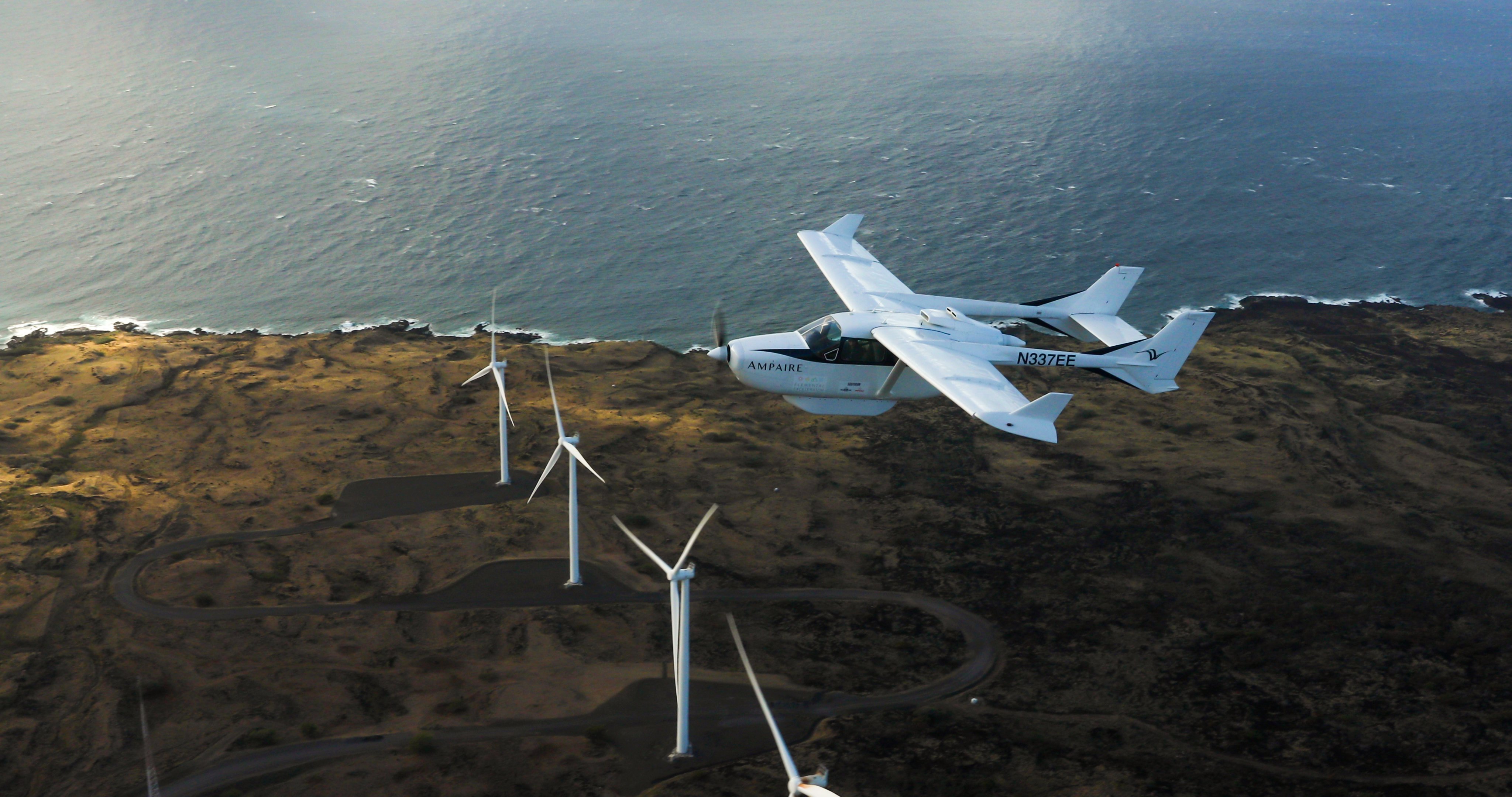Click Here to View This Page on Production Frontend
Click Here to Export Node Content
Click Here to View Printer-Friendly Version (Raw Backend)
Note: front-end display has links to styled print versions.
Content Node ID: 418796
Ampaire is halfway through a month-long flight demonstration program for its Electric EEL aircraft in Hawaii through a partnership with local regional carrier Mokulele Airlines. On November 22, its hybrid-electric version of the Cessna 337 Skymaster twin-engine piston aircraft started operating at least one round-trip each day on the 20-minute flight from Maui’s Kahului Airport to Hana on the other side of the island.
Mokulele is one of more than 15 airlines to have signed a letter of interest with Ampaire with a view to possibly purchasing the Electric EEL. It is the first company to operate a hybrid-electric aircraft under the FAA’s Experimental-Market Survey category, which allows Ampaire to fly with its crew and essential personnel for crew training and an evaluation of the scope of commercial operations. The flight trials are being supported financially by Elemental Excelerator, which is a global climate-technology accelerator organization.
According to Ampaire, the trials will demonstrate electric aviation’s potential to reduce carbon emissions and evaluate the robustness of the California-based company’s technology. “We can take lessons from this series of flights and apply them to subsequent, larger aircraft designs in the works,” commented CEO Kevin Noertker.
The Electric EEL has a 300-hp piston engine in the rear and a 160-kW electric power unit at the front, plus a battery pack installed in an aerodynamically-contoured pod beneath the fuselage. Ampaire estimates that fuel consumption and carbon dioxide emissions will be around 40 to 50 percent less than for the regular Skymaster.
For the flight trials in Hawaii, the only ground infrastructure requirement was to wire one of Mokulele’s hangars with a 208-volt three-phase outlet. Ampaire has been working with the state’s Department of Transportation and the Hawaiian Electric Company to explore longer-term infrastructure to support a fleet of hybrid or all-electric aircraft.
As of December 4, the Electric EEL had logged 56 hours during 43 flights since testing began at Ampaire's base near Los Angeles. At that point, around half of those flights had been conducted in Hawaii and the aircraft was achieving 100 percent dispatch reliability.
According to Ampaire, the main purpose of the flight trials is to demonstrate the robustness of the propulsion system and its integration on the existing aircraft. The engineering team has been gathering performance data from the electric power system, including its new silicon-carbide inverter and the battery system.
The flight trials also have allowed the company and Mokulele to assess recharge times and how to best integrate charging and servicing into the airline's "operating tempo." They have also helped to address the ground infrastructure needs for hybrid aircraft operations.
In a December 9 announcement, Noertker stated that Ampaire is mainly focused on the regional air transportation sector. “The average regional airline route in the U.S. is less than 500 miles,” he said. “Upgrading today’s aircraft for electric power is a relatively low-cost, low-risk path to aircraft certification. Then we expect to move on to increasingly efficient and capable clean-sheet designs.”
U.S. commuter airline group Southern Airways, which owns Mokulele Airlines, has said that it plans to add hybrid and electric aircraft to its fleet soon. “We know other regionals are watching us with great interest,” said CEO Stan Little.
According to the manufacturer, the 15-plus letters of interest for the Electric EEL program, "solidify the exploratory relationship between the potential operator and Ampaire." The company said that it also now holds letters of intent from two undisclosed operators covering a total of 114 aircraft.
Meanwhile, Ampaire is continuing work to develop a hybrid-electric conversion for the larger Twin Otter aircraft, which will be called the Eco Otter SX. This program has received funding from NASA to mature the supporting technology. The company is also considering other possible conversion programs for regional airliners seating between 9 and 19 passengers.
Elemental Excelerator is seeking to encourage the use of electric aviation to improve accessibility for rural and island communities. “Building a climate-positive aviation industry is about much more than just a plane,” commented Danielle Harris, the group’s director of mobility innovation. “It requires rethinking everything from airport infrastructure to pilot behavior, and that’s what this project is really proving.”
